Introduction
Chestnut and chicken stew is a timeless dish cherished for its rich, earthy flavors and comforting warmth. The combination of tender chicken, buttery chestnuts, and aromatic broth creates a meal that feels both nourishing and indulgent. Yet, for those seeking to expand their culinary repertoire, this classic recipe offers a versatile canvas for experimentation. By introducing complementary ingredients, you can transform a simple stew into a gourmet experience, balancing texture, flavor, and nutrition. This article explores a diverse array of additions—from vegetables and herbs to global spices and unexpected proteins—that will elevate your chestnut and chicken stew to new heights. Whether you aim to deepen its umami richness, add a pop of color, or incorporate seasonal produce, these suggestions will inspire you to reimagine this beloved dish.
Vegetables: Adding Depth and Nutrition
Vegetables are the backbone of any stew, providing texture, sweetness, and nutritional value. Beyond the traditional carrots and onions, consider these options:
- Sweet Potatoes: Their natural sweetness and creamy texture complement the earthiness of chestnuts. Peel and cube them, adding halfway through cooking to prevent mushiness.
- Fennel: Sliced thinly, fennel imparts a subtle anise-like flavor that pairs beautifully with poultry. Roast it first for a caramelized edge.
- Leeks: Their mild onion flavor adds sophistication. Sauté in butter before simmering to mellow their sharpness.
- Kale or Spinach: For a green boost, stir in chopped kale during the last 10 minutes of cooking, or wilt baby spinach just before serving.
- Butternut Squash: Roast cubes until golden, then toss into the stew for a velvety sweetness that mirrors the chestnuts.
Pro Tip: Root vegetables like parsnips or turnips can be added early to absorb the broth’s flavors, while delicate greens should be reserved for the final stages.

Grains and Legumes: Hearty Additions
For a more substantial meal, incorporate grains or legumes:
- Barley: Its chewy texture and nutty taste make it a stellar substitute for rice. Simmer until tender, allowing it to soak up the broth.
- Wild Rice: For a visually striking twist, mix wild rice with white rice. Its earthy aroma complements the chestnuts.
- Chickpeas: Canned or cooked from scratch, chickpeas add protein and a creamy bite. Mash a portion to thicken the broth.
- Lentils: French green lentils hold their shape well, while red lentils dissolve into the stew for a thicker consistency.
Culinary Note: Pre-cook grains to avoid over-salting the stew, as they absorb liquid rapidly.
Herbs and Spices: Aromatic Complexity
Herbs and spices can shift the stew’s profile from rustic to refined:
- Fresh Sage: Its piney notes cut through richness. Add whole leaves during cooking or fry crispy sage garnish.
- Star Anise: One or two pods infuse a subtle licorice undertone. Remove before serving to avoid bitterness.
- Smoked Paprika: A pinch elevates the smokiness, especially if using smoked chicken or bacon.
- Lemon Thyme: This herb’s citrusy zing brightens the dish. Strip leaves and add at the end.
- Ginger: Grated fresh ginger introduces warmth, ideal for colder months. Pair with a splash of soy sauce for an Asian twist.
Balance Act: Tread lightly with strong spices like cinnamon or cloves, as they can overpower the chestnuts’ delicate flavor.
Mushrooms: Umami Boosters
Mushrooms are a stew’s best friend, offering meaty texture and umami depth:
- Shiitake: Dried or fresh, their savory intensity amplifies the broth. Rehydrate dried shiitakes and slice thinly.
- Porcini: A small handful of dried porcini, soaked in hot water, imparts a forest-like aroma. Strain the soaking liquid and add it to the stew.
- Cremini or Button Mushrooms: Sauté until golden to concentrate their flavor before mixing into the pot.
Tip: Reserve some mushrooms to roast separately as a crispy garnish.
Fruits: Sweet and Tangy Contrasts
Fruit might seem unconventional, but it can balance the stew’s richness:
- Dried Apricots: Chop and add early; they soften into sweet-tart pockets.
- Apples: Tart varieties like Granny Smith, diced and sautéed with leeks, contribute a refreshing crunch.
- Cranberries: Fresh or frozen, they add a burst of acidity. Toss in during the last 15 minutes.
Seasonal Pairing: Pears or quinces in autumn, or figs in late summer, offer regional flair.

Dairy and Cream: Luxurious Finishes
For a velvety finish, consider dairy elements:
- Crème Fraîche: Swirl a dollop into each bowl before serving for a tangy richness.
- Coconut Milk: Replace a portion of the broth with full-fat coconut milk for a Thai-inspired curry twist.
- Grated Parmesan: A sprinkle of aged cheese adds salty complexity.
Caution: Avoid boiling dairy-based stews post-addition to prevent curdling.
Nuts and Seeds: Crunchy Garnishes
Elevate texture with toasted nuts or seeds:
- Toasted Hazelnuts: Chop and sprinkle over the stew for a nutty contrast.
- Pumpkin Seeds: Roast with smoked paprika for a crunchy, spicy garnish.
- Pine Nuts: Lightly toast and mix in at the end for a delicate crunch.
Presentation Hack: Layer garnishes just before serving to maintain their texture.
Global Influences: Fusion Flavors
Take your stew on a culinary journey with these international spins:
- Moroccan-Inspired: Add preserved lemon, olives, and a dash of harissa. Serve with couscous.
- Japanese Twist: Incorporate miso paste, dashi broth, and shredded nori. Top with soft-boiled eggs.
- Mexican Flair: Include hominy, chipotle peppers in adobo, and lime wedges. Garnish with cilantro.
Adaptation Tip: Adjust spice levels gradually, tasting as you go to avoid overpowering the dish.
Proteins: Beyond Chicken
For non-traditional takes, introduce alternative proteins:
- Duck Confit: Replace chicken with slow-cooked duck legs for unparalleled richness.
- Seitan or Tofu: For a vegetarian version, use seitan “chicken” or extra-firm tofu, pan-fried until crisp.
- Shrimp: Add large prawns during the final minutes for a coastal flair.
Cooking Method: Sear proteins separately to develop caramelization before integrating into the stew.

Acidic Elements: Brightening the Broth
Acidity cuts through richness and awakens the palate:
- Balsamic Glaze: Drizzle over the finished stew for a glossy, tangy finish.
- Tomatoes: Fresh cherry tomatoes or sun-dried varieties add a lively sweetness.
- Apple Cider Vinegar: A splash at the end brightens the broth without overwhelming.
Ratio Guide: Start with a teaspoon of acid and adjust to taste.
Aromatics: Beyond the Basics
Elevate the stew’s base with unconventional aromatics:
- Lemongrass: Bash a stalk and simmer it for a citrusy freshness.
- Garlic Confit: Melt roasted garlic cloves into the broth for a mellow sweetness.
- Black Garlic: A clove or two adds a molasses-like depth.
Preparation: Remove tough aromatics like lemongrass before serving.
Wine and Beer: Depth from Alcohol
Deglaze the pot with alcohol for complex flavor layers:
- Dry White Wine: A crisp Sauvignon Blanc enhances the chicken’s flavor.
- Dark Beer: Use a stout or porter for a malty, robust stew.
- Sherry: A fortified wine like amontillado adds nutty richness.
Safety Note: Ensure the alcohol cooks off if serving to children or those avoiding alcohol.
Edible Flowers and Herbs: Garnish Elegance
Elevate presentation with delicate garnishes:
- Chive Blossoms: Their mild onion flavor and purple hue add whimsy.
- Microgreens: Pea shoots or radish sprouts offer a peppery kick.
- Crystallized Violets: For special occasions, these edible flowers add a touch of romance.
Sourcing: Check local farmers’ markets for seasonal edible blooms.

Fermented Foods: Probiotic Punch
Introduce gut-friendly elements:
- Kimchi: Finely chop and stir in at the end for a spicy, fermented tang.
- Miso Paste: Whisk into the broth for an umami-rich base.
- Sauerkraut: Add a tangy crunch by layering it on top of bowls.
Temperature Tip: Avoid boiling fermented ingredients to preserve their probiotics.
Tropical Flavors: A Vacation-Inspired Twist
Transport your taste buds with tropical ingredients:
- Mango: Add diced fresh mango during the last five minutes for a juicy sweetness.
- Coconut Flakes: Toast and sprinkle over the stew with fresh cilantro.
- Lime Zest: Grate over bowls for a citrusy zing.
Pairing: Serve with jasmine rice and a side of pickled vegetables.
Nutritional Boosters: Hidden Superfoods
Sneak in extra nutrients without sacrificing flavor:
- Spirulina Powder: A pinch mixed into the broth adds a vibrant green hue and protein.
- Hemp Seeds: Toasted and sprinkled on top, they offer omega-3s.
- Turmeric: Along with its anti-inflammatory benefits, it adds a golden hue.
Disguise Tactics: Blend turmeric into the broth early to distribute its color evenly.
Cheese: Melty and Salty Accents
Cheese can transform the stew into a comforting masterpiece:
- Gruyère: Melt over the top under a broiler for a bubbly, nutty crust.
- Feta: Crumble over the stew for a briny contrast.
- Goat Cheese: Dollop on warm bowls for a creamy tang.
Serving Suggestion: Pair melted cheese with crusty bread for dipping.
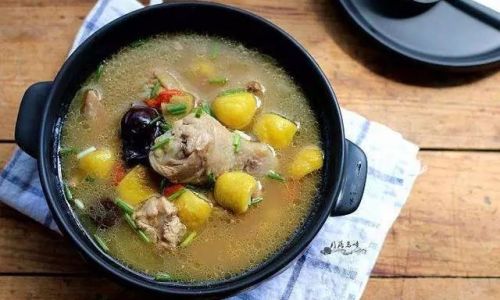
Chocolate and Coffee: Unexpected Richness
For bold flavor experiments:
- Dark Chocolate: A square of 70% cocoa, melted into the broth, adds depth.
- Espresso Powder: A pinch enhances the stew’s savory notes without tasting like coffee.
Application: Use sparingly to avoid a dessert-like profile.
Seafood: Coastal Elegance
Elevate the stew with oceanic flavors:
- Mussels or Clams: Steam open in the broth during the last five minutes.
- Scallops: Sear separately and nestle into bowls for a luxurious touch.
- White Fish: Flaky varieties like cod or halibut can be poached gently in the stew.
Sustainability Tip: Opt for locally sourced, responsibly harvested seafood.
Vegan Alternatives: Plant-Based Poultry
Craft a vegan version using meat substitutes:
- Jackfruit: Young jackfruit, shredded and sautéed, mimics pulled chicken.
- King Oyster Mushrooms: Slice into planks and marinate in soy sauce before roasting.
- Tofu Puffs: Lightly fry and soak up the broth’s flavors.
Broth Base: Use vegetable stock fortified with nutritional yeast for cheesy undertones.
Conclusion
Chestnut and chicken stew is a culinary chameleon, adaptable to countless interpretations. By experimenting with vegetables, spices, proteins, and global influences, you can tailor this dish to suit any season, occasion, or dietary preference. Whether you opt for the smokiness of paprika, the sweetness of butternut squash, or the luxurious melt of Gruyère, each addition invites a new layer of complexity. The key lies in balancing flavors and textures, ensuring that every spoonful tells a story. So, the next time you simmer a pot of this comforting stew, let your pantry—and your imagination—be your guide. After all, the best recipes are those that evolve with each creative twist.

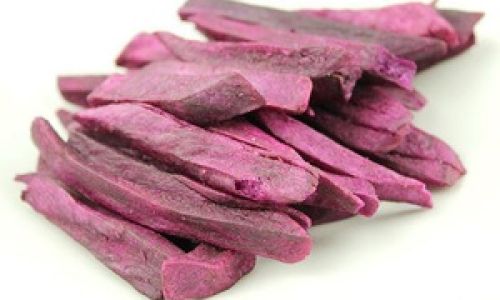
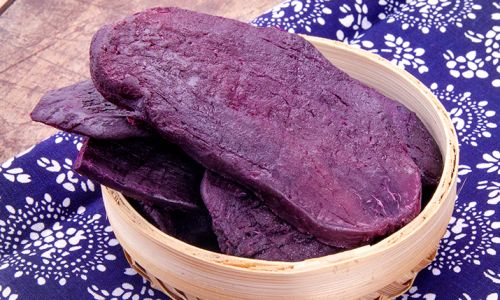

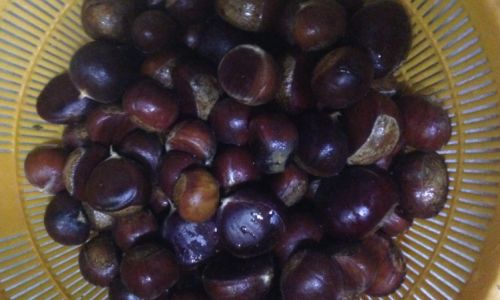
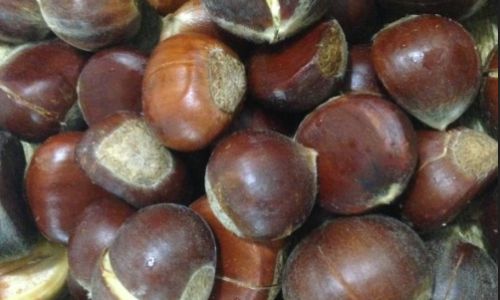
0 comments